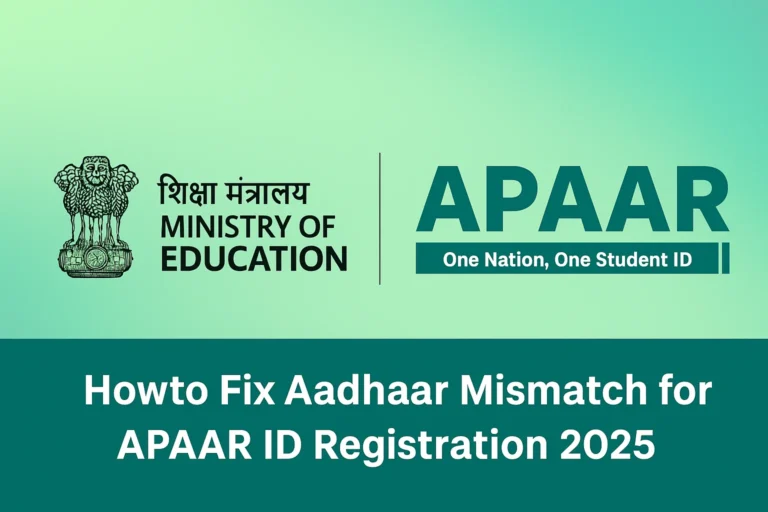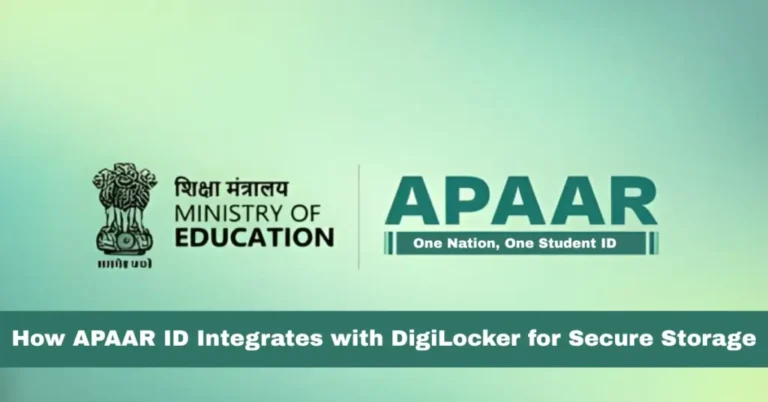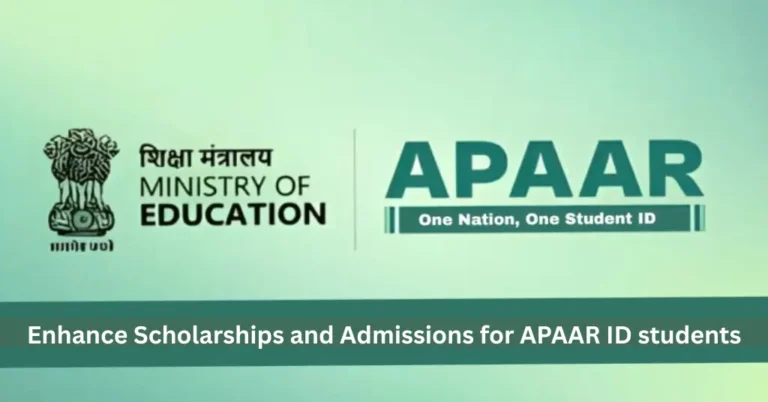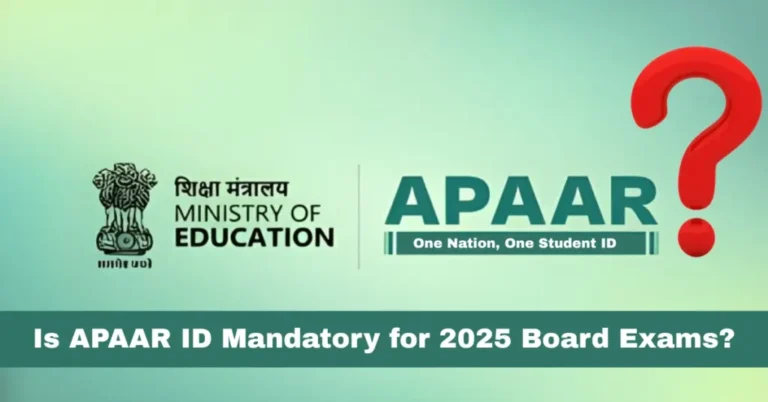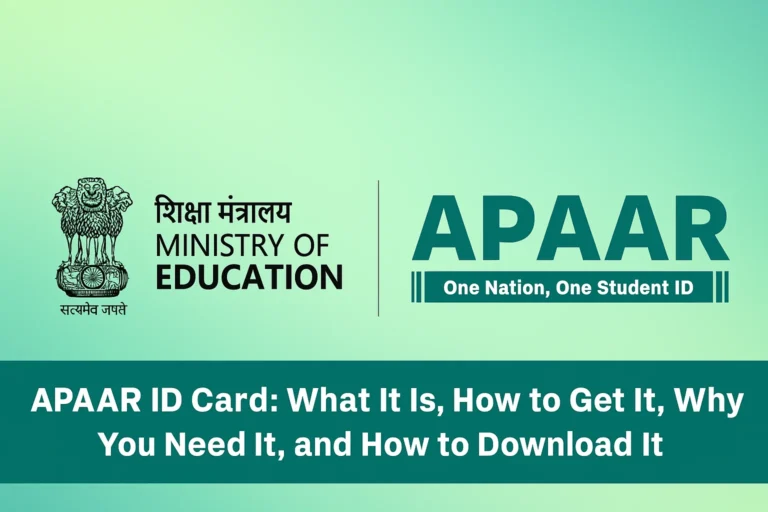Streamline Career Planning with Your APAAR ID
In India’s rapidly evolving educational landscape, the introduction of the APAAR ID (Automated Permanent Academic Account Registry) marks a groundbreaking shift toward centralized and transparent academic data management. Designed by the Ministry of Education under the National Education Policy (NEP) 2020, the APAAR ID aims to consolidate every learner’s academic journey—from primary school to higher education—into one digital identity. This initiative is not just a technological upgrade; it represents a structural reform in how educational credentials, skills, and career pathways are managed across the nation.

Understanding the Concept of APAAR ID
The APAAR ID functions as a unique digital identification system that securely stores a student’s complete academic record on the Academic Bank of Credits (ABC) platform. It simplifies tracking achievements, transferring institutions, and verifying educational data. Each student is assigned a lifelong, tamper-proof ID that integrates seamlessly with the DigiLocker system, enabling easy access to verified credentials.
This digital framework ensures portability and transparency, reducing paperwork while empowering students to maintain control over their data. It effectively bridges the gap between learning outcomes and employment readiness.
Objectives Behind the APAAR Initiative
The creation of the APAAR ID aligns with the Government of India’s vision for a digitally inclusive and learner-centric education ecosystem. Its primary objectives include:
Through APAAR, the government aims to integrate education, technology, and employability into a cohesive national framework.
APAAR ID and Career Planning: A Strategic Integration
Career planning has traditionally been fragmented due to scattered academic records and limited access to verified credentials. The APAAR ID addresses these challenges by centralizing academic and skill data, allowing both students and institutions to make informed career-related decisions.
By streamlining the verification and mapping of qualifications, APAAR facilitates personalized learning paths and career forecasting based on verified data, making it a powerful tool for students, employers, and policymakers alike.
Simplifying Academic Progress Tracking
One of the major challenges faced by students and institutions is maintaining consistent academic records during transitions—such as changing schools, courses, or universities. With APAAR ID, each academic achievement is digitally stored and automatically updated, ensuring seamless progress tracking.
This transparent system eliminates duplication, fraud, and administrative errors, while making it easier for learners to demonstrate their complete academic journey.
Enhancing Student Mobility Across Institutions
The APAAR framework enables horizontal and vertical mobility between educational institutions. Through the Academic Bank of Credits, learners can accumulate, transfer, or redeem credits earned from various recognized institutions.
Such flexibility supports multi-disciplinary learning and empowers students to customize their academic paths, ensuring better alignment with evolving career interests and employment trends.
Integration with Skill Development Initiatives
In addition to academic data, APAAR ID integrates vocational and skill-based credentials, aligning with national initiatives such as Skill India and Digital India. This integration ensures that both academic and practical skills are recorded under a single digital identity.
Employers can easily verify a candidate’s qualifications and competencies, thereby enhancing employability and reducing the skill gap in the labor market.
Data Security and Privacy Framework
Given the sensitivity of academic data, the APAAR system employs robust cybersecurity measures and follows strict data protection protocols. Students retain complete ownership and consent control over how their data is shared or accessed.
This commitment to data integrity and privacy reinforces trust among educational stakeholders, ensuring ethical and transparent data management practices.
Institutional Benefits of APAAR ID Implementation
Educational institutions gain multiple benefits through the APAAR ecosystem:
By reducing administrative burden, APAAR allows institutions to focus on academic quality and innovation.
Government’s Role in Promoting Digital Education Infrastructure
The success of APAAR depends on the robust digital infrastructure provided by government bodies like the University Grants Commission (UGC), AICTE, and DigiLocker. These institutions ensure standardized frameworks, security protocols, and interoperability among systems.
This national-level collaboration is a crucial step toward realizing India’s vision of a digitally empowered learning ecosystem.
APAAR ID: A Catalyst for Future-Ready Careers
In the modern employment landscape, career success depends on both academic achievements and skill proficiency. APAAR helps students map their strengths, identify career gaps, and access personalized recommendations for upskilling or reskilling.
By aligning learning outcomes with job market requirements, APAAR transforms traditional career planning into a data-informed, evidence-based process.
Bridging the Gap Between Education and Employment
APAAR ID’s integrated system helps bridge the gap between educational qualifications and employability by offering employers access to authenticated academic and skill data. This transparency reduces hiring biases and enhances workforce planning.
Employers can assess candidates based on verified competencies, leading to a more efficient and merit-based recruitment ecosystem.
Encouraging Lifelong Learning and Professional Growth
The dynamic nature of the job market requires individuals to continuously upgrade their skills. APAAR ID supports lifelong learning by allowing learners to add new certifications, diplomas, and training achievements to their profile throughout their life.
This approach promotes continuous growth, adaptability, and resilience in an ever-changing global economy.
Boosting Administrative Efficiency
Through digitization, APAAR minimizes bureaucratic delays in verification, admission, and certification processes. Institutions can process applications faster, validate credentials instantly, and maintain accurate records.
Such administrative efficiency contributes to time savings, reduced costs, and improved transparency across the education system.
Integration with Artificial Intelligence and Analytics
The future potential of APAAR extends beyond data storage. By integrating AI and data analytics, policymakers and institutions can gain valuable insights into learning outcomes, skill trends, and employment patterns.
These insights can guide curriculum design, policy decisions, and resource allocation, ensuring alignment between education and workforce demand.
Parental and Institutional Access
APAAR also allows parents and guardians to track their children’s academic progress through secure channels. This promotes accountability, collaboration, and informed decision-making between schools and families.
Challenges in Implementation
Despite its promise, APAAR’s implementation faces certain challenges, including digital literacy gaps, infrastructure limitations, and data migration complexities. However, ongoing training, awareness campaigns, and technological support aim to overcome these barriers, ensuring nationwide adoption.
The Future Vision of APAAR
The government envisions expanding APAAR’s scope beyond academic records to include co-curricular, research, and innovation-based achievements. This holistic approach will create a comprehensive learner profile, serving as a foundation for an adaptive and equitable education system.
Impact on India’s Digital Transformation Journey
APAAR is a cornerstone of India’s broader digital transformation, complementing initiatives like National Digital Education Architecture (NDEAR) and Bharat Stack. By empowering citizens with verified academic identities, it strengthens the country’s digital public infrastructure and supports inclusive growth.
Frequently Asked Questions
1. What is the APAAR ID?
The APAAR ID is a unique digital identifier that securely stores a student’s academic and skill-based records on the Academic Bank of Credits platform.
2. How does APAAR support career planning?
By consolidating verified academic data, APAAR enables personalized career mapping and seamless access to educational achievements for employers and institutions.
3. Is the APAAR ID mandatory for all students?
While encouraged nationwide, its adoption is gradually expanding across schools and universities under the NEP 2020 framework.
4. How is student data protected under APAAR?
APAAR employs advanced encryption and user-consent mechanisms, ensuring privacy, data security, and ethical information sharing.
5. Can vocational courses and certifications be added to the APAAR profile?
Yes, vocational, skill-based, and professional development programs are all integrated into the APAAR system to provide a complete academic profile.
Final Thoughts
The APAAR ID represents a monumental leap toward a transparent, efficient, and learner-centric education system. By unifying academic records, enhancing employability, and promoting lifelong learning, it streamlines career planning and fosters trust in India’s educational framework.
As India advances toward a digital-first future, the APAAR initiative stands as a symbol of innovation, integrity, and inclusion—ensuring that every learner’s journey is recognized, recorded, and rewarded.

